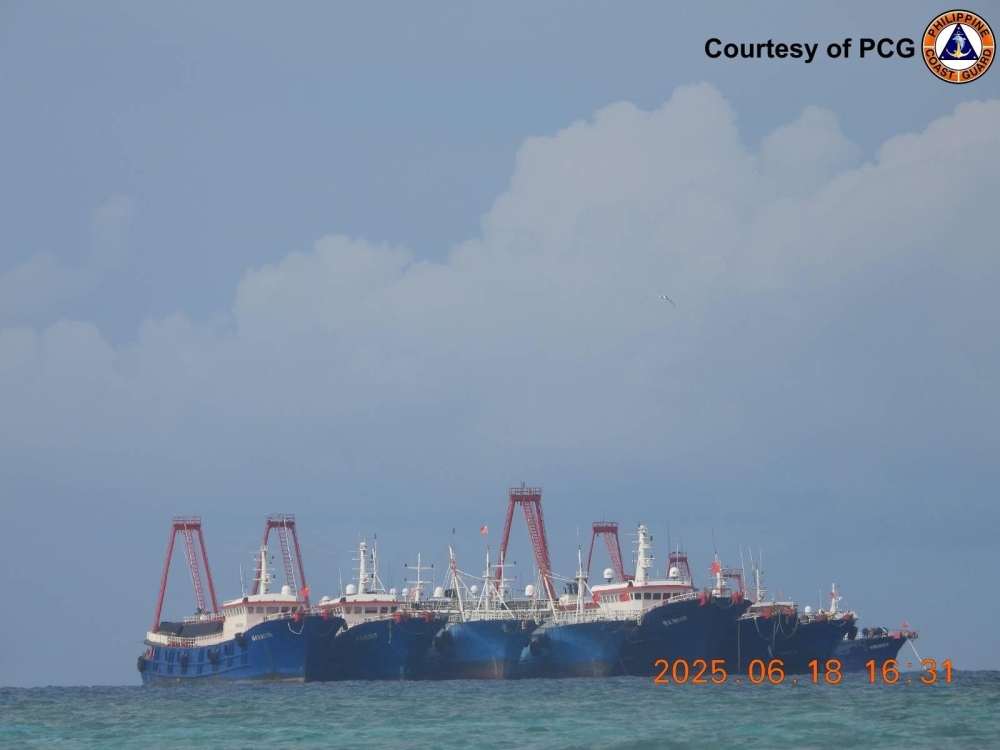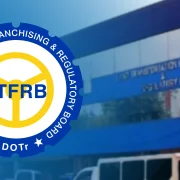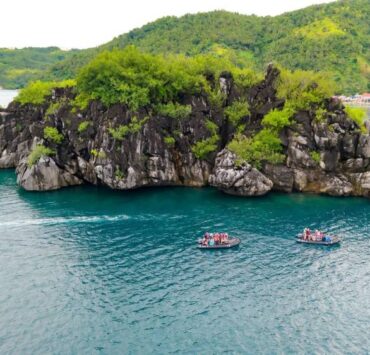Over 50 Chinese vessels swarm WPS reef–PCG

The Philippine Coast Guard (PCG) on Thursday reported the presence of over 50 Chinese maritime militia (CMM) vessels at Rozul (Iroquois) reef in the West Philippine Sea (WPS), waters within Manila’s 370-kilometer exclusive economic zone (EEZ).
Commodore Jay Tarriela, the PCG spokesperson for the West Philippine Sea, said the agency on Wednesday deployed two vessels and an aircraft to challenge the “illegal swarming” of the Chinese ships at the reef, which began on June 17.
Tarriela said PCG personnel told the Chinese vessels that they were operating within the Philippines’ EEZ, approximately 241 km off the coast of Palawan province.
“The PCG emphasized that the irregular patterns of movement, along with their anchoring and swarming activities, violate the principles of freedom of navigation and infringe upon the sovereign rights of the Philippines in its EEZ,” he said in a statement.
The Chinese vessels, Tarriela said, were told to “clarify their intentions, cease their swarming behaviors,” and navigate in accordance with the Philippine Maritime Zones Act, the United Nations Convention on the Law of the Sea, and the 2016 arbitral award.
“Unfortunately, no response was received from the CMM vessels,” he said.
At a press conference in Manila on Thursday, Tarriela said the PCG personnel told the Chinese via radio challenges to “depart immediately,” but not one of them responded.

Aiding local fishermen
The PCG also deployed their rigid-hull inflatable boats to approach the Chinese vessels in the shallow waters of the reef and record their bow numbers.
In Palawan, personnel from the Bureau of Fisheries and Aquatic Resources (BFAR) and the PCG, who were installing “payao” (fish aggregating devices) in the West Philippine Sea, were shadowed by China Coast Guard (CCG) vessels during their mission this week.
From Monday to Wednesday, BFAR and PCG personnel installed the payaos to aid fishermen from Palawan who continue to venture into the West Philippine Sea despite persistent shadowing and radio challenges from CCG vessels.
The Chinese vessels approached the convoy of BRP Lapu-Lapu, PCG’s BRP Cape San Agustin (MRRV 4408), BRP Cape Engaño, and the commercial fishing vessel MV Mamalakaya, which was commissioned by the BFAR to transport the sinkers for the payaos.
On the first day of the mission, the Philippine convoy met at least 10 Filipino fishing boats near Hasa-Hasa Shoal (Half Moon Shoal), where they installed 11 payaos, followed by nine more at Kanduli Shoal (Royal Captain Shoal).
The payaos are part of a grant from the BFAR to Palawan fisherfolk under the Kabalikat ng Bagong Bayaning Mangingisda (KBBM) program of the Department of Agriculture, launched by BFAR and the PCG at Buliluyan Port in Bataraza, Palawan, on June 4.
CCG vessels began shadowing the convoy around 5 a.m. on Monday and issued radio challenges, particularly targeting BRP Cape Engaño.
At least five CCG vessels—with bow numbers 5101, 5103, 21549, 21558 and one unidentified—were spotted shadowing the Philippine mission, with one vessel reportedly approaching as close as 1.85 kilometers (1 nautical mile).
Asserting rights
Tarriela, during the launch of the KBBM program, said the installation of payaos was aimed at encouraging Palawan fishermen to operate beyond the country’s territorial waters and venture farther into the EEZ—both to increase fish catch and to assert the Philippines’ sovereign rights over the West Philippine Sea.
“Our objective right now is to encourage our fishermen to go beyond the territorial sea for two reasons: one, there is more fish catch in the area, which would increase supply and potentially lower fish prices in Manila and other areas in Luzon,” Tarriela said in an interview during the KBBM launch.
He said that increased civilian maritime activity by Filipinos in the WPS is crucial in maintaining the country’s claim over the disputed waters.
Meanwhile, Elmer Ngujo, president of the Palawan Fisherfolk Association, said the installation of payaos would significantly benefit local fishermen by increasing their catch.
Ngujo urged his fellow fishermen to protect and preserve the payaos.
“It’s really valuable to us, so we must take care of it. In return for their program, we will also report what we observe the Chinese are doing in the West Philippine Sea,” he said in Filipino.

















